E.C. Quiz #1 ~ A&P BSC2085.011
1/83
There's no tags or description
Looks like no tags are added yet.
Name | Mastery | Learn | Test | Matching | Spaced |
|---|
No study sessions yet.
84 Terms
Superior
towards the upper part of a structure
inferior
towards the lower part of a structure
anterior/ventral
nearer to or at the front of the body
posterior/dorsal
nearer to or at the back of the body
medial
nearer to the midline or midsagittal plane
lateral
farther from the body midline or midsagittal plane
intermediate
between two structures
proximal
nearer to the attachment of a limb to the truck
distal
farther from the attachment of a limb to the truck
superficial
towards or on the body surface
deep
away from the surface of the body
supination
palms up or facing anterior
pronation
palms down or facing posterior
inversion
soles pointing in or medially
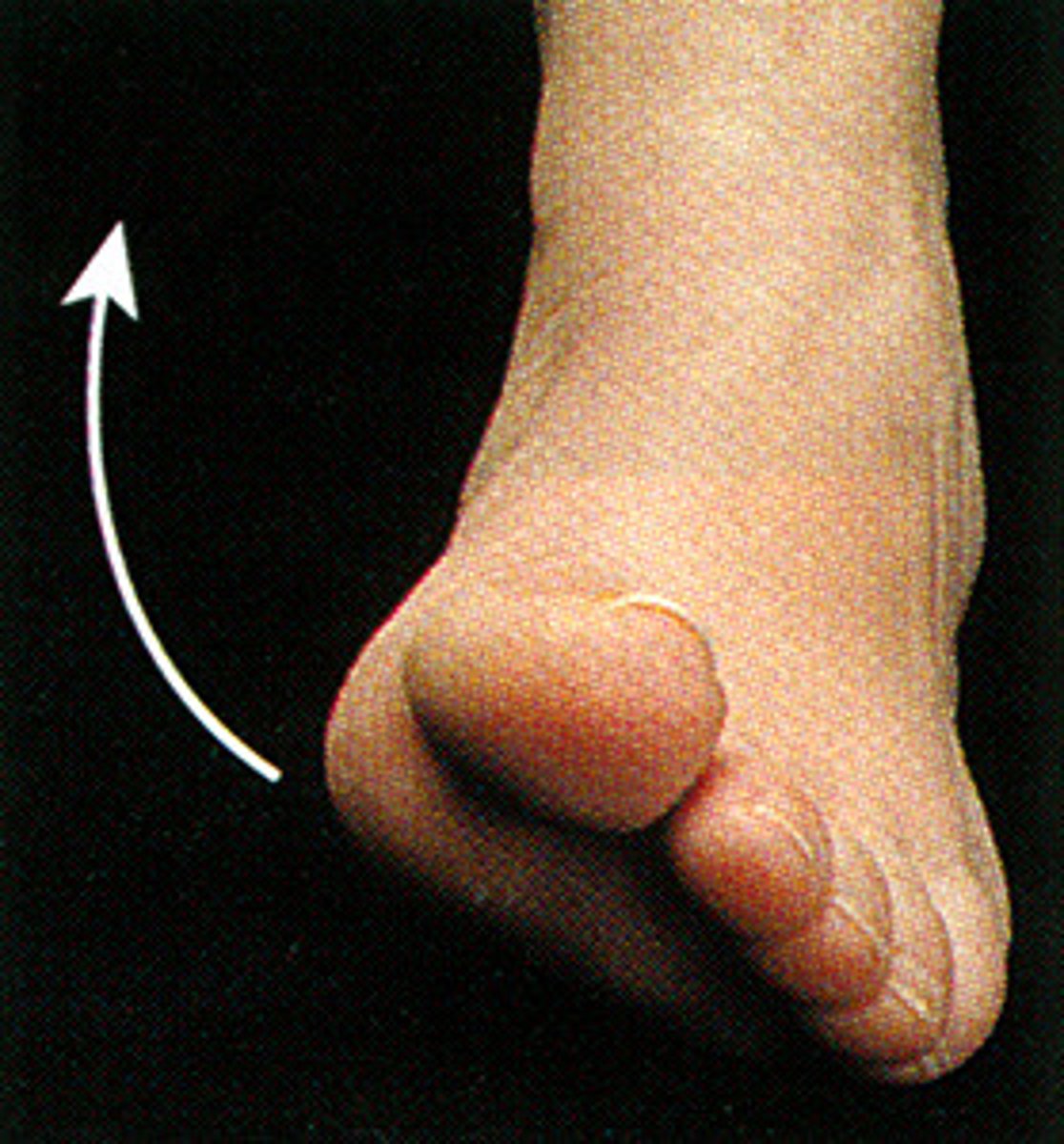
eversion
soles pointing out or laterally
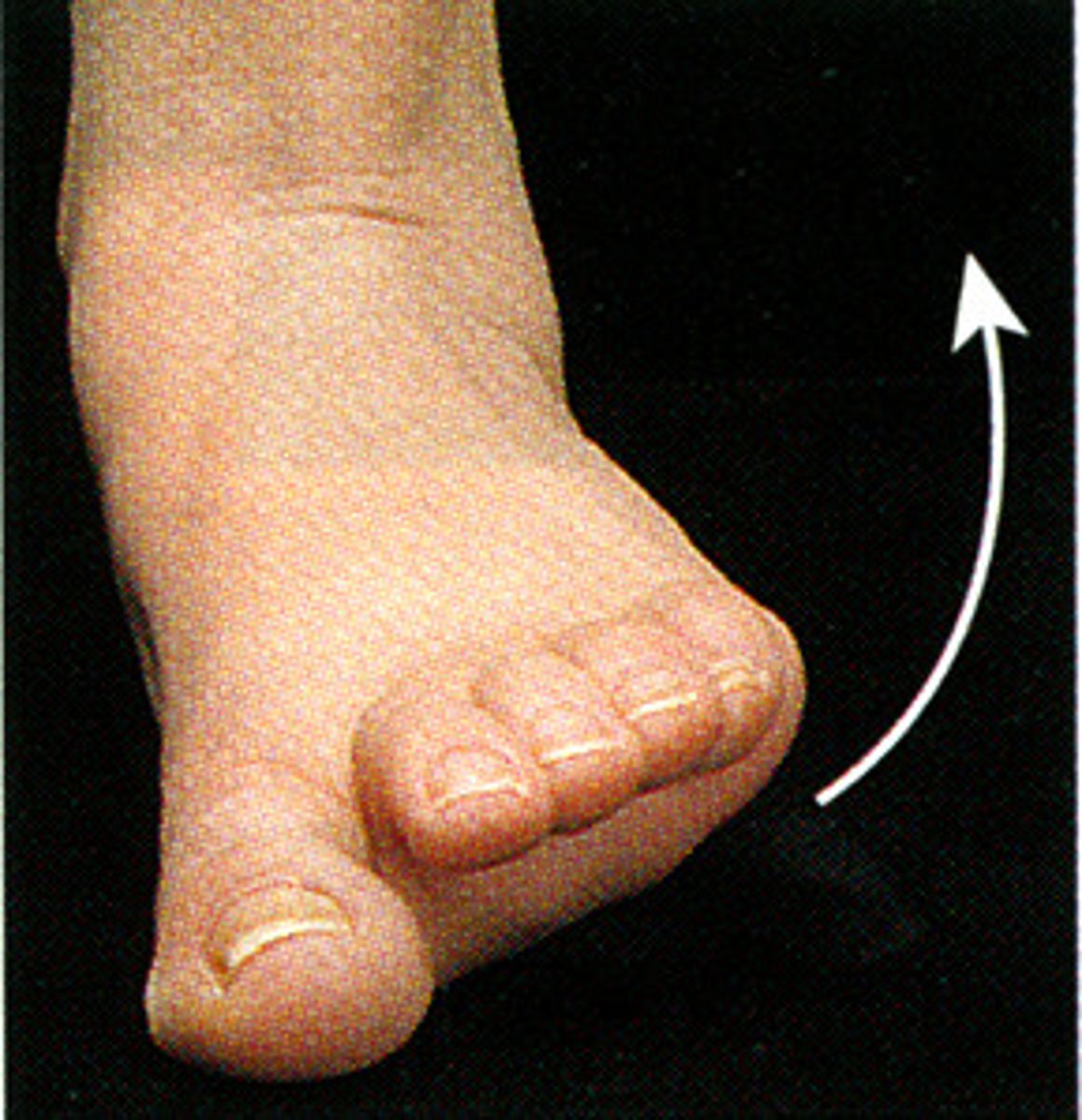
dorsiflexion
pointing the foot with the toes toward the body (or on the heels)
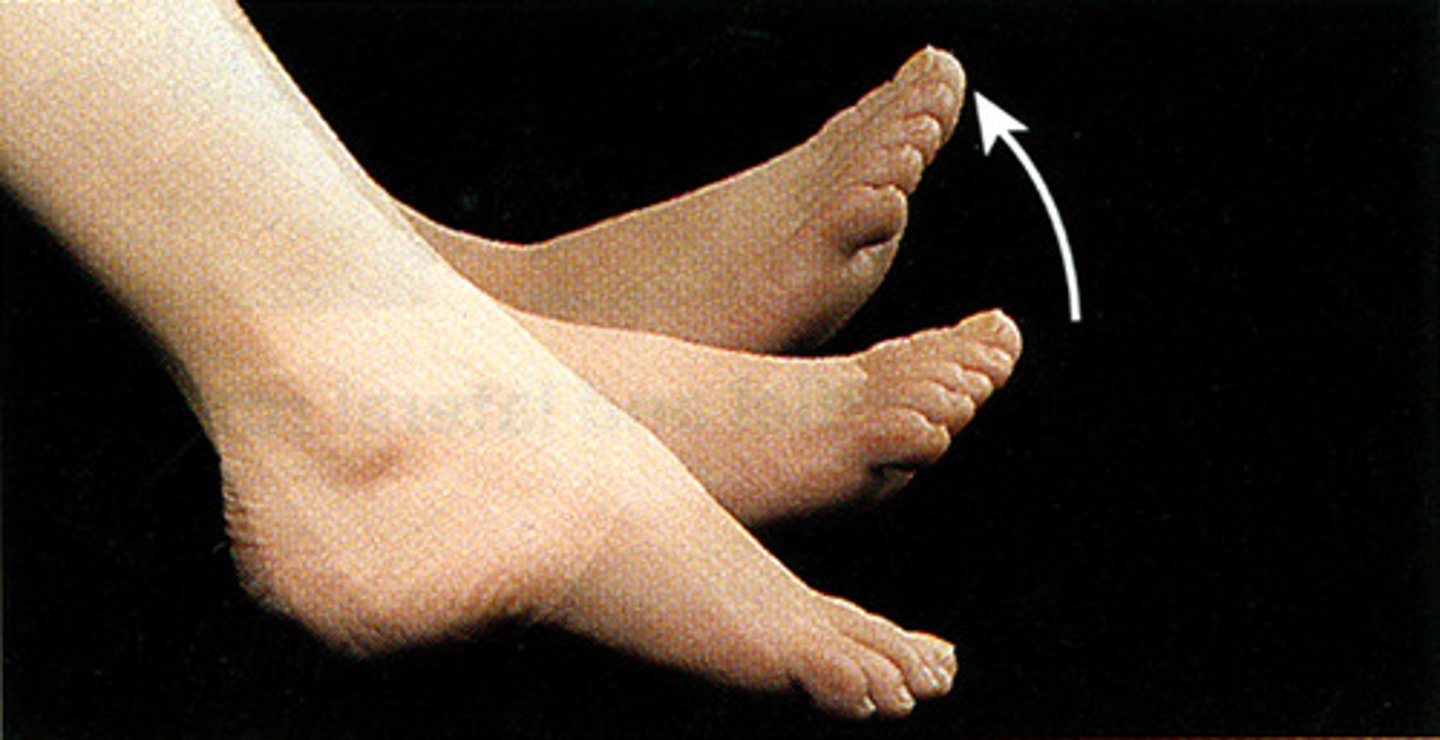
plantar flexion
pointing the foot away from the body (or standing on toes)
cranial
toward the head or superior end of the body
caudal
towards the tail or inferior end of the truck (cauda equina)
ipselateral
situated on or pertaining to the same side of the body
contralateral
situated on or pertaining to the opposited side
flexion
decrease of angle between two bones
extension
increase of angle between two bones
lateral flexion
bending the neck or torso to the side
rotation
moving a bone or body part around its own axis
abduction
movement away from the midline of the body
adduction
movement towards the midline of the body
antecubital
situated in front of the elbow
axillary
small pyramidal space between the upper lateral chest/arm (armpit)
brachial
pertaining to the arm (from shoulder to elbow)
buccal
inside your cheek
calcaneal
the heel bone (one of the tarsals)
carpal
the wrist bones/region
cervical
pertaining to the neck, or the neck of an organ or structure
digital
finger manipulation or imprint
femoral
the thigh
glabella
smooth area on the frontal bone, between the eyebrows
gluteal
the buttocks
inguinal
the juncture between the abdomen and thigh (groin)
Lumbar
the part of the back between the thorax & pelvis (loins)
mammary
the breast
occipital
the posterior inferior portion of the cranium
orbital
bony cavity that contains the eyeball
otic
pertaining to the ear (aural)
patellar
sesamoid bone situated at the front of the knee (kneecap)
plantar
sole of the foot
popliteral
the posterior surface of the knee (back of the knee)
pubic
anterior inferior portion of the hip bone
scapular
the flat triangular bone in the back of the shoulder (blade)
sternal
pertaining to the sternum
tarsal
the ankle bones
thoracic
pertaining to the chest or spinal region (thorax)
vertebral
pertaining to the 24 bones of the spinal column
sagittal plane
vertical plane that divides into right and left side
- midsagittal
- parasagittal
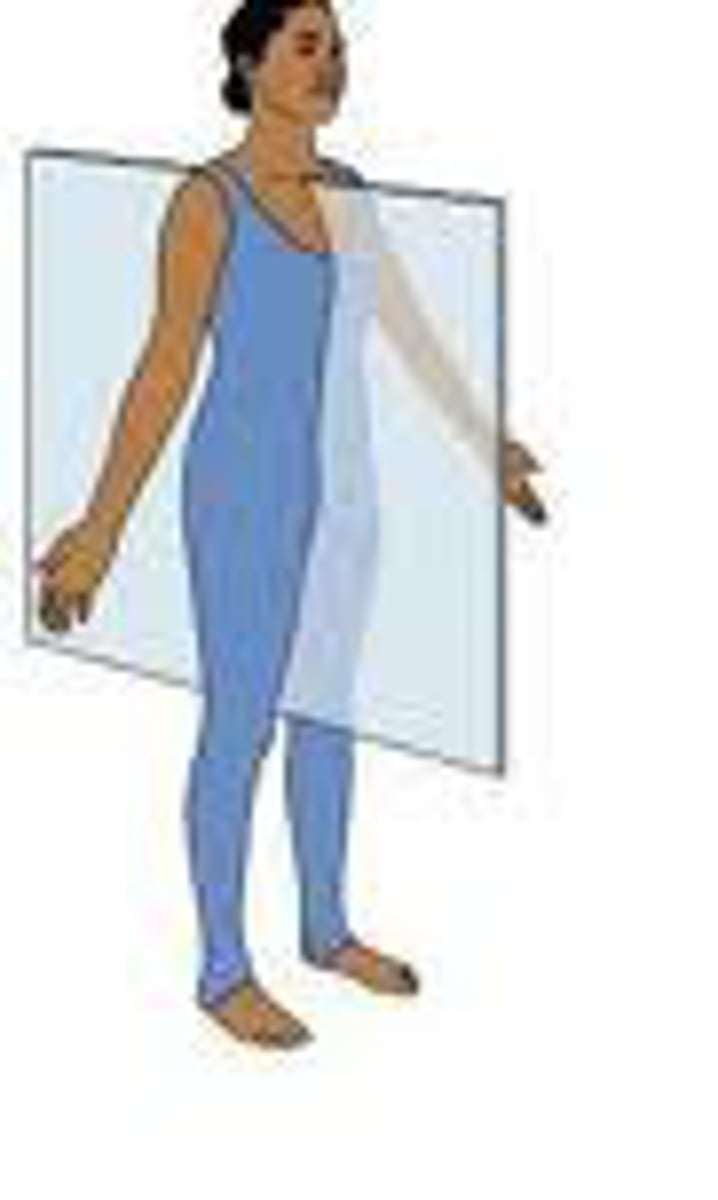
midsagittal plane
when the right & left side are equal in size & runs through the midline of the body or organ
parasagittal plane
when the body or organ is divided into unequal right & left sides, with the planes adjacent or parallel
frontal/coronal plane
divides the body or organ into anterior/posterior portions
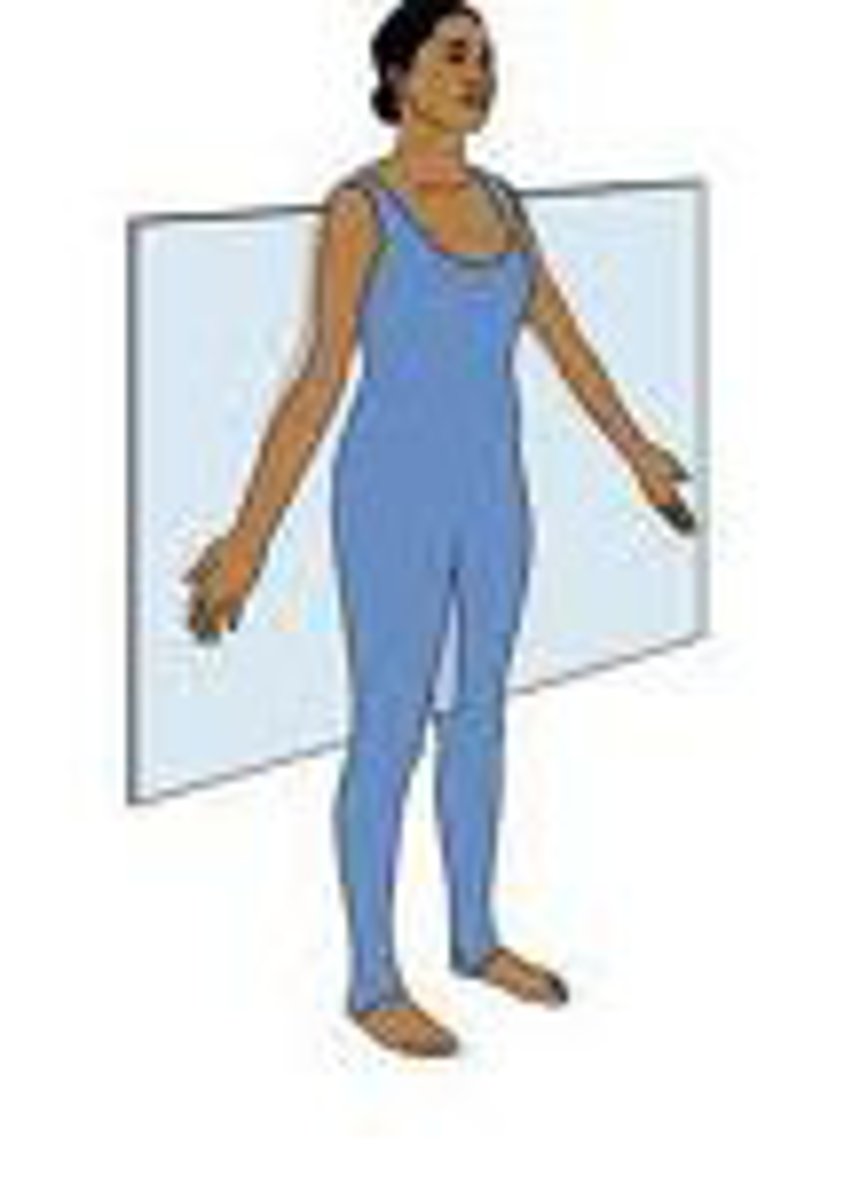
transverse plane
divided the body into superior & inferior portions
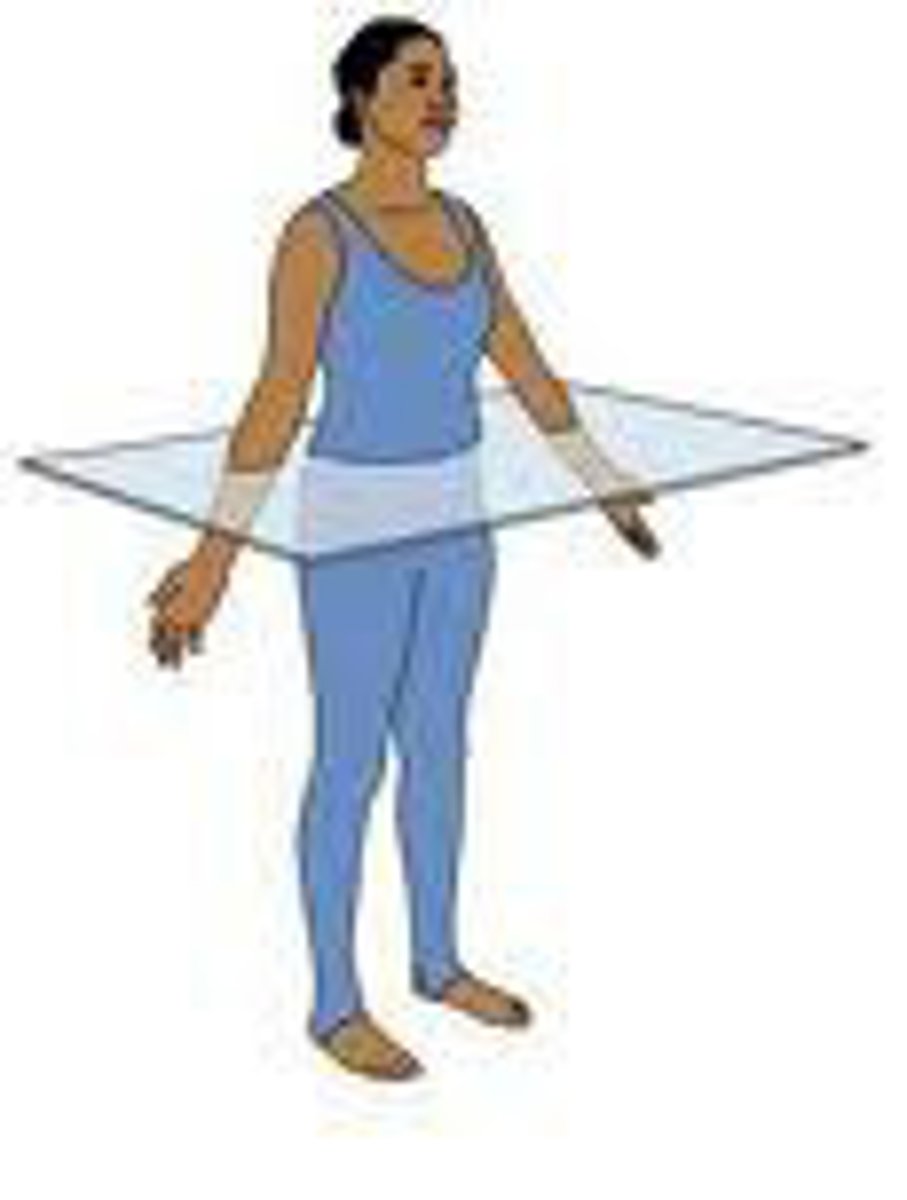
oblique plane
passes through the body or an organ at a diagonal angle
Integumentary system
skin, hair, nails
Integumentary system functions
protection; regulates temp; eliminates waste; sensations
Skeletal system & joints
bones, cartilage, joints
Skeletal system & joints functions
support & protects body; attaches muscle; aids body movements; produces blood cells
Muscular System
skeletal muscles, cardiac & smooth
Muscular System functions
body movementt; body posture; generates heat
nervous system
brain, spinal cord, nerves, sense organs
nervous system functions
generates nerve impulses to regulate body activities
endocrine system
glands, hormones
endocrine system functions
regulates body activities by releasing hormones
cardiovascular system
heart, blood, blood vessels
cardiovascular system functions
heart pumps blood through blood vessels to carry oxygen & nutrients to cells & carbon dioxide & wastes away from cells; regulates pH balance, temperature, & water content of body fluids; defend against diseases; repair damaged vessels
Lymphatic system & immunity
lymph nodes, vessels, spleen, thymus
Lymphatic system & immunity functions
protect against diseases; returns proteins & fluid to blood; carries lipids from GI tract to blood
respiratory system
nose, pharynx, larynx, trachea, bronchi, lungs
respiratory system functions
transfer O2 from lungs to blood & CO2 from blood to lungs; help regulate pH balance of body fluids; help produce sound
digestive system & nutrition/metabolism
mouth, esophagus, stomach, small and large intestine (colon), rectum, anus, liver, gallbladder, pancreas, and salivary glands.
digestive system & nutrition/metabolism functions
physical & chemical breakdown of food; absorb nutrients; eliminates solid waste
urinary system & fluid/pH
kidneys, ureters, urinary bladder, urethra
urinary system & fluid/pH functions
produces, stores & eliminates urine & waste; regulates volume of fluids in the body & chemical composition of blood & pH balance
reproductive system
male & female reproductive systems
male reproductive system
testes, penis, prostate
male reproductive system functions
produces gametes (sperm); hormones (testosterone)
female reproductive system
ovaries, uterus, vagina
female reproductive system functions
produce gametes (oocytes/eggs); hormones (estrogen)